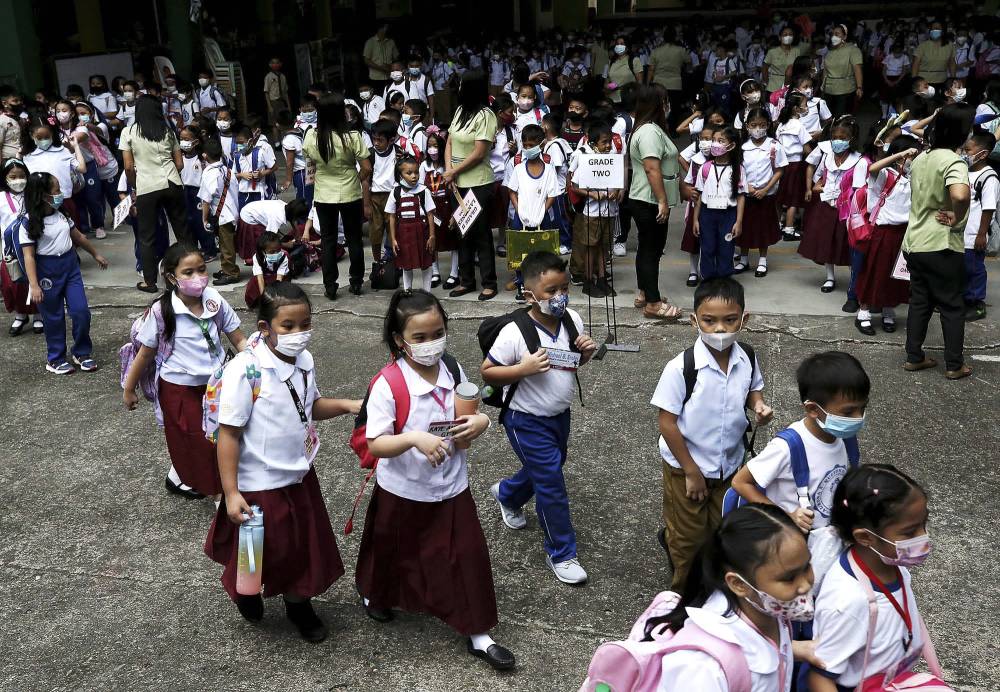The case for a June school opening

In February, the government announced the return of the old school calendar where classes start in June instead of the third or fourth quarter, as has been the case since the pandemic.
But the Department of Education (DepEd) insists on doing it gradually, which means a June opening won’t happen so soon. Under the original plan, the transition will take place over a five-year period before settling into a June-to-March schedule. Later, in response to calls from education stakeholders, DepEd agreed to reduce the wait to two years.
The rationale is sound—so that students’ learning progress would not be impeded.
But one variable has sparked yet another clamor to execute the new policy as early as next school year: extreme heat due to a strong El Niño and the prevailing dry season that is making classrooms a hellish place for students and teachers alike.
Caught off-guard
Last week, President Marcos vowed to complete the transition sooner than planned amid soaring heat indexes. In the meantime, classes in many areas are suspended while a number of schools have shifted to remote learning.
The President admitted that the government had been caught off-guard by higher-than-normal temperatures this early in the dry season: “We did not expect that it would be like this; usually by now, temperatures would be starting to rise but we have been having this intense heat early on.”
Thus, the Alliance of Concerned Teachers (ACT) and Teachers’ Dignity Coalition requested an immediate return to the old calendar, as public schools are ill-equipped to hold lessons under such oppressive conditions.
Alternative delivery modes
DepEd, however, has rejected the call. “To reduce the timeline any further would have significant impacts not only on learning outcomes but also on the well-being of learners and teachers due to the lack of sufficient breaks,” Education Undersecretary Michael Poa said.
He noted that schools were empowered to switch to alternative delivery modes (ADMs) during disasters, including weather disturbances. Among ADMs offered by DepEd are homeschooling; instructional management by parents, community and teachers; and modified in-school, off-school approach. Some of these modes allow online learning, depending on the resources available to schools.
Of 47,678 public schools, 5,844 have switched to ADMs, which, according to Poa, proves “not all schools are similarly situated.”
“Hence, giving school heads … the discretion to switch to ADMs provides a more immediate and effective response to heat conditions rather than knee-jerk changes that would further compromise learning recovery,” he said.
Hot and stuffy classroom
It’s understandable that DepEd is sticking to its guns, as the agency remains under tremendous pressure to improve the poor performance of Filipino students in international scholastic assessments, which worsened during the pandemic.
But in keeping its eye on the ball, DepEd might have forgotten about the players—the students and teachers.
An ACT online survey of 11,706 public school teachers showed that two-thirds of them found the heat in classrooms to be unbearable. Ninety-seven percent of respondents use electric fans while only one percent have air conditioners. The rest rely on natural ventilation.
As anyone who has ever gone to school knows, a hot and stuffy classroom is a poor environment for learning. By failing to address this, DepEd courts the opposite of its desired results. And by leaving it to school heads to decide when to tap distance learning modes, it shirks its responsibility to protect the welfare of learners and teachers.
There are various methods, albeit costly and ambitious, to solve this conundrum. One is boosting the climate resiliency of educational infrastructures, and the other is a flexible and permanent hybrid setup.
Digital transformation
For a start, there must be enough classrooms, desks, and chairs to prevent overcrowding in schools. Campuses must be flood-resistant and weatherproof, and all classrooms properly ventilated. Lastly, poor schools, teachers, and learners must receive ample support for distance learning.
One way forward is Sen. Sherwin Gatchalian’s proposal to accelerate the education sector’s “digital transformation” in Senate Bill No. 383. In this, the government may partner with telecom companies for the technological requirements, such as Wi-Fi-enabled laptops and free internet connection.
It must be stressed that a June school opening won’t fix all the problems that climate change brings. All it would do is facilitate the return of summer vacations. As June approaches, the source of torment will abruptly switch from heat to rain.
Or perhaps not.
The reality of climate change is that storms, floods, droughts, and heat waves will keep disrupting our lives in ways that are harder and harder to predict. Therefore, it is vital that schools adapt quickly so that students can learn well in any setting or situation—on or off campus, in hot or wet weather.

















